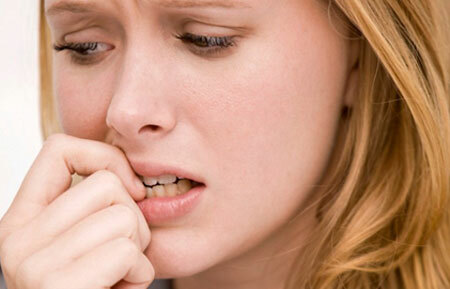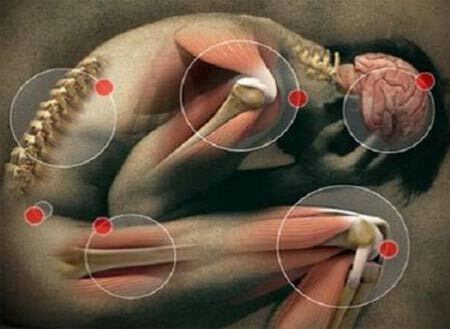Currently, this medical term can be met as a major disease not so often. As an independent primary diagnosis it is almost not used, but as a concomitant syndrome it is quite common, especially in the clinic of nervous diseases.
In everyday life one can often hear a curse about some mentally unbalanced subject who "rushes to people" - "neurasthenic" or "neurasthenic."
In the theater and in the cinema even such an actor's neurasthenic role characterizes a person who is a toy in the hands of an evil destiny - "a pale young man with a burning eye".For example, Rodion Raskolnikov was a typical neurasthenic in Dostoevsky, and the era of romanticism in general gave rise to interest in such subjects "not of this world."
Suffice it to recall, for example, Edgar Poe or the great Frederic Chopin. It was the painful, heightened sensitivity of such a neurotic personality warehouse that proved to be in demand after the era of classicism.
So, Oleg Dahl, who played the unlucky hero-lover in the second part of the film trilogy "Can not be", posed by Leonid Gayday, based on the works of Zoshchenko, showed a fine example of a refined and painful aesthetic neurasthenic.
What does this term mean, and why such diagnoses can easily "reward" a person on the street?
Contents
- 1 Neurasthenia, what is it?
- 2 Classification and forms of neurasthenia
- 3 Symptoms of neurasthenia
- 4 Treatment of neurasthenia - a comprehensive approach to
- 5 Which doctors to treat?
- 6 Prevention
Neurasthenia, what is it?

It should be said at once that the concept of "neurasthenia" is completely unequal to the concept of "mentally ill person", as it seems at first glance. What it is? The term "neurasthenia" is complex: nevros + asthenos, and means "weakness, exhaustion of the nervous system" or simply a state of weak nervous status.
And here we are not talking about the fundamental, basic properties of the nervous system: it is arranged in the same way as in a normal person, the speed of the nerve impulse, the sensitive and motor sphere, the higher nervous activity, the coordination of movements in neurasthenia are exactly the same,as well as a completely healthy person.
But neurasthenia is a functional, completely reversible state in which the compensatory-adaptive mechanisms of the central nervous system are scaled, and the ability of a person to resist stress is reduced.
Therefore, each of us can become a neurasthenic, for example, after abuse of coffee and insomnia for one or two nights. On the other hand, this acquired state of nervous system weakness often accompanies severe somatic diseases.
For example, after severe pneumonia, after meningitis, people are discharged from the hospital with recovery for the underlying disease and with a "neurasthenic syndrome" as a concomitant diagnosis.
It is the weakness of the inhibitory effects of the cerebral cortex and "complete shakiness" that leads to acute reactions to minor irritants, which was appreciated in the era of Romanticism. It should be added that significantly increased manifestations of neurasthenia tuberculosis, which was then met very often.
With a proper diet, proper nutrition and continued treatment, the nervous system soon returns to normal, and the patient is considered fully healthy. What are the forms and types of neurasthenia?
Classification and forms of neurasthenia

Here it is necessary to recall two types of the reaction of the nervous system to the stimulus that is present in all living beings: hyperactive and sluggish. Similarly, it can be applied to a person under a variety of conditions. So, there may be arterial hypertension and hypotension.
And vegetative-vascular dystonia, for example, is realized both in hypertonic and hypotonic type. Neurasthenia is realized in exactly the same way, and it has three stages, which successively replace each other in the development of the disease:
- Neurasthenia is hypersthenic. It is the initial form of the disease, in which the organism still "has strength", but the inhibitory effects of the cerebral cortex are weakened. At the same time the patient has a strong excitability and irritability, he reacts exclusively to all external manifestations emotionally, including by trifles. Increasing dispersal and distractibility, a person often throws work to be done, but not because of fatigue, but because of distraction. The stability of attention is reduced.
- In the second, progressing stage, the degree of reaction is significantly reduced, while maintaining the irritability. Emotional outbreaks become shorter due to exhaustion of the reaction. The melancholy of mood intensifies, there is tearfulness, attention is quickly exhausted. At this stage, shifts occur in sleep, there is lethargy and drowsiness during the day, and persistent insomnia at night, which becomes chronic.
- The last stage of a functional disorder, already on the verge of a persistent, organic lesion is hypodynamic, or hyposthenic neurasthenia. In this case, every reaction of the body loses its brightness, and the main signs of this state are indifference, apathy and depression. Performance, especially mental, is sharply reduced. The patient is anxious, his sphere of interests is narrowed, he is fixed on internal sensations, and this state very easily passes into depression, being squeezed out into the subconscious.
Neurasthenia in children can often be associated with perinatal birth trauma, avitaminosis, deficiency of body weight and delayed neuropsychological development.
Adults, in addition to the above diseases, develop chronic stress, lack of sleep combined with increased mental activity. Sometimes neurasthenia can be a consequence of alcohol abuse.
Symptoms of neurasthenia

Irritability and irritability are the first signs of neurasthenia, photo
As it became clear, manifestations and symptoms of neurasthenia completely depend on the stage of the disease development.
The first stage of the for the patient is characterized by:
- irritability,
- screaming,
- short temper,
- inadequate reactions "over trifles",
- impatience.
This patient is easy to offend and indignant at the slightest occasion, he constantly interrupts in conversation, raises his voice, "climbs into the bottle."At home, such a person turns into a tyrant, although almost always sincerely believes that he is completely healthy, only "a little overworked."
Sleeping night is intermittent, morning awakening is painful, and in the first half of the day such a person is tormented by disassembly and inability to concentrate, which causes problems at work. Such a patient is often concerned with headaches that compress, like "helmets" or "hoops".

Symptoms of the second period of neurasthenia are manifested by signs of intolerance to bright light, loud sound, tearfulness, depression, significant problems at work and in the family, expressed sleep disorders. Occasionally, this negative mood background is interrupted by short flashes of neurotic reaction.
Finally, at the third stage of , the main symptoms are a great feeling of depression and fatigue, fixing on illnesses, hypochondriacal states, thoughts of death, complete sleep disorder and loss of efficiency.
Treatment of neurasthenia - an integrated approach to
As noted by the old specialists of neurologists and psychiatrists, neurasthenia does not require any special treatment in most cases, and the beginning of recovery in almost all patients coincides with the normalization of sleep.
Therefore, the first thing that a doctor should pay attention to is the hygiene of work and rest, and compliance with sleep. You need to go for a walk before going to bed, to ventilate the room well, not to eat at night, you can use sedatives to improve sleep.

Other drugs for asthenia can be:
- multivitamin and mineral complexes;
- activating drugs - adaptogens( tincture of Eleutherococcus, Schizandra, golden root, ginseng);
- neurasthenia, drug treatment of which is ineffective( in severe cases, after diseases leading to general exhaustion) can be treated with the use of anabolic steroid hormones in short courses.
Neurasthenia, the symptoms and treatment of which are identified and carried out in a timely manner, can even do without medications. Most often this refers to those forms that are caused by chronic fatigue, in combination, for example, using coffee and cigarettes as a "dope", stimulating thinking.
As an example, we can cite "neurasthenia programmer", in which often all of the above risk factors are combined with beer consumption at the computer, visual tension, and hypodynamia.
Therefore, treatment with this development of neurasthenia is reduced to a complete change in lifestyle.
Which doctors should I contact?
The whole point is that it is the basis of the damage to the central nervous system. If a person was lying in the hospital about a serious illness, then he, as a rule, is cured in a polyclinic by a specialized specialist. For example, at the pulmonologist after the transferred pneumonia, at the phthisiatrician after tuberculosis.
Usually, with successful ambulatory treatment of the underlying disease, neurasthenia also passes. Sometimes a consultation of a neurologist( neurologist) is required.
In the event that neurasthenia appeared "from scratch", for example, due to overwork - you can turn to a neurologist.
Prevention
Primary prophylaxis of neurasthenia is reduced, first of all, to the careful observance of the regimen of the day, especially sleep and wakefulness. As shown, it is with sleep disturbance that "all the other symptoms appear with the" snowball ", which the body can easily cope with if enough time is allocated for sleep.
The second "cornerstone" is the rejection of all kinds of artificial stimulants of the central system( alcohol, smoking, coffee abuse and, of course, categorical refusal to take drugs).It is known that amphetamine addiction harms the central nervous system especially badly.
In addition, it is necessary to make mobile walks in nature, to be tempered, to go in for swimming and physical culture, and in general, to live a full life. And only then no one will think that you are "neurasthenic," and you will not be ashamed of the scandal over a trifling matter in the workplace.



